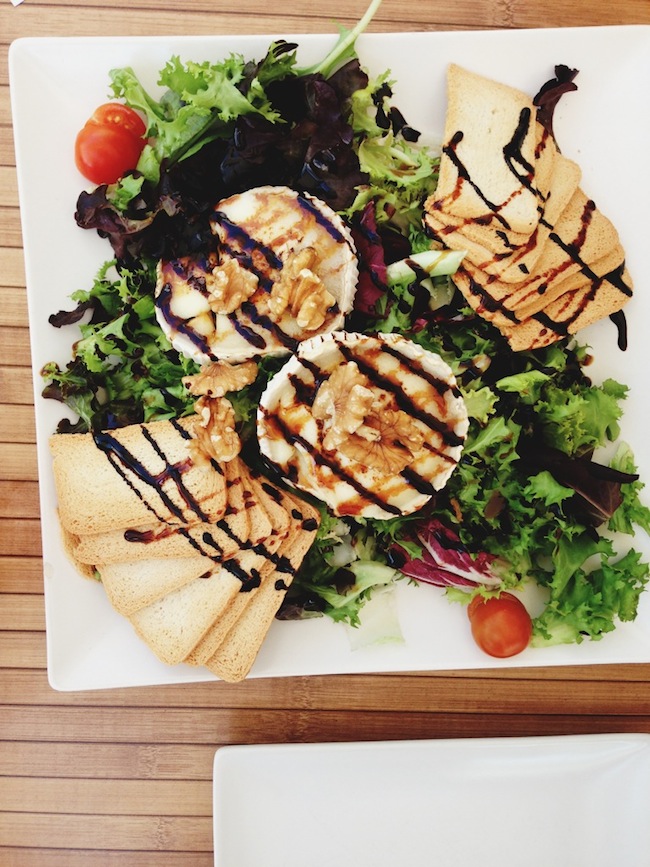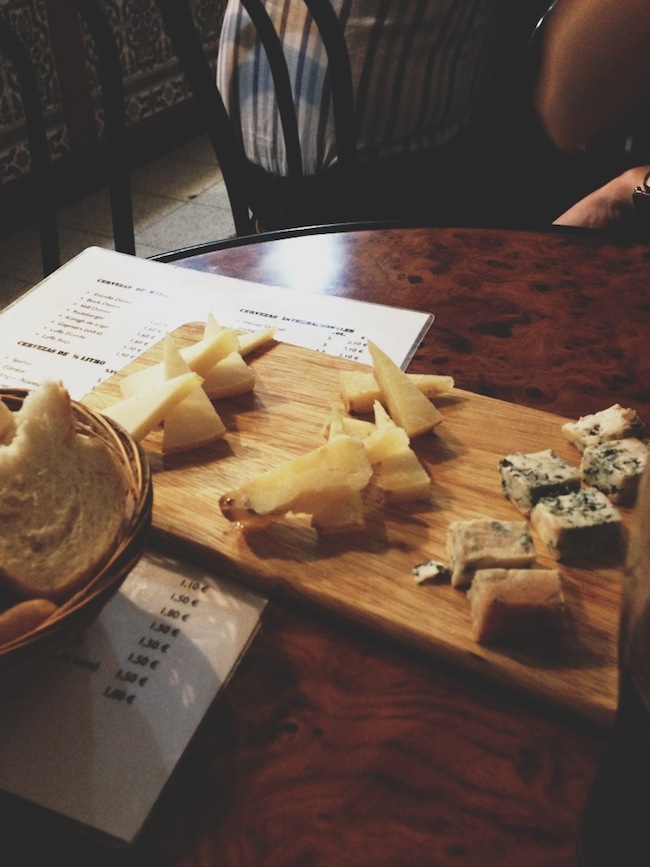I am sure you’ve heard that Spanish food is incredible, that it’s unlike anything you’ve ever tasted, that it’s innovative and bright and well, you know – all that hype. Here’s the thing. It’s totally true. Unfortunately, it took me a good two years of living in Spain to realize it.
Let me back up a bit. I moved to Spain on the premise of staying for nine months – just enough time to explore Europe and sink my teeth into Spain before heading back home. My first day in Spain, I was all alone. I hadn’t made friends yet, but that clearly had no effect on my hunger, and I walked into a little bar to order a sandwich. Now a sandwich in the United States is a hefty sort of thing, layered with ingredients and toppings and sauces. And as I was fairly hungry when I ordered this “sandwich,” I was more than disappointed when two flimsy toasted pieces of sandwich bread came my way with a little lettuce, tomato and a fried egg stuffed between them.
Okay, so my first experience wasn’t great, but over time I did learn to enjoy Spanish food. I liked it. I really liked it. But I never reached the point of loving it. I continued ordering the same things again and again at restaurants and bars, and never felt it was special. In my head, American food was superior to the simple and often bland food of Spain.
About a year and a half after I moved to Spain, I met my Spanish boyfriend, and I decided to tell him my opinion about all of this. He was shocked. I thought he was too proud to admit I was right, but I realize now I was horribly mistaken. As we continued dating, I started tasting foods I had never even heard of before, and I had to come to terms with the fact that after eighteen months of eating three meals a day, I actually knew nothing about Spanish food. Actually, my realization was an epiphany.

I remember the day exactly. It was a late chilly morning in February or March, and we went to an area of Córdoba I’d never visited before. We sat outside on a sunny terrace and perused the menu. I don’t recall everything we ate that day, but I do remember the coquinas. Coquinas are small little clams that are found off the coast of Southern Spain. The flesh inside the tiny shell is sweet and soft, and if they’re cooked right, as they were that particular day, they slide right out of their shell and into your mouth. The coquinas were prepared with only olive oil, parsley and garlic, and the effect of these somewhat simple ingredients on my palate was dramatic. Those little coquinas changed my idea about Spanish food and cooking, not because they were the most delicious dish I’d ever tried, but because they surprised me, they caught me off guard completely. How could I have been oblivious to such delicacies? How was it possible I had never heard of them before?
Those little “a-ha!” moments happened to me again and again with Pablo. He showed me gulas, morcón, fresh gambas, fried quail eggs, salt-cured anchovies and lomo. He took whatever closed notion of Spanish food I had and cracked it open, right down the middle.
From the coquinas day on, I wanted to try anything and everything Pablo threw my way. Before meeting him, I steered clear of all things from the ocean, but he certainly showed me what I had been missing. I began craving all types of fried fish that were fresh from the sea and lightly fried in olive oil. I wondered how on earth I could’ve gone so long without loving chorizo and morcilla. I met Pablo’s parents and soon came to know homemade Spanish food – delicious stews that were studded with pimentón, big pans of plump rice on Sundays and roasted suckling pig with achingly tender meat on special occasions.

I consider myself lucky to have crossed over from an American tourist to an adopted Spanish daughter. My palate changed because I was not a culinary outsider; I was eating with a Spaniard and his Spanish family. When we visit Pablo’s family now, I always find myself tucked away in the kitchen with his mom, swapping recipes or, more often than not, bombarding her with questions about how she makes everything taste so good. And you know what? Her answers are usually simple and straightforward. That’s not to say that Spanish food is simple or lackluster or nothing special. It means that many times the best food you’ll try is the food that doesn’t require a lot of fancy ingredients or silly methods of preparation and cooking. It’s food that takes time, though, and it’s something Spaniards do wonderfully as they patiently let food cook for hours in the oven or steep atop the stove, allowing the flavors to truly meld together. It’s food that’s made with ingredients that have always been around and aren’t going anywhere anytime soon.
If you’re visiting Spain, don’t make the mistakes I did. Order things from the menu that you’re not sure about or that you’ve never even heard of. Listen to the waiter’s recommendations and try as much as you can. Spanish food really isn’t like the food you have back home, so sit back and get ready for a world of surprises.
Katie Stearns lives, eats and breathes life in the South of Spain, where she’s going on her fourth year of life abroad. What started out as a nine-month stint teaching English as a foreign language has spun into a career of writing and marketing for Andalucía Inside, a luxury tour guide company located in Seville.



